(Report produced by: Shanghai Securities, Liu Yangdong, Wu Tingting)
1. Robot Drive Method: Mainly Motor
The robot primarily uses motors as its drive method
The drive methods for robots can be divided into hydraulic drive, pneumatic drive, and motor drive, among which motor drive is the most widely used method, offering advantages such as high precision and real-time response, making it more suitable for today’s trends in robot development. Motor drive is the main driving method for robots, and the drive system is the mechanism that causes the robot to perform actions, making it a key component of the robot. According to the power source, it can be divided into hydraulic drive, pneumatic drive, and motor drive, with hydraulic drive and motor drive being more common. Boston Dynamics in the United States uses hydraulic drive in its Atlas robot due to its strong drive and explosive power, suitable for activities like jumping and carrying heavy loads, focusing on the mobility capabilities of the Atlas robot. Most other robotics companies adopt motor drives, such as Tesla’s humanoid robot Optimus, which emphasizes intelligence and uses high torque density motors and servo technology. In terms of precise control of movements, motor drive outperforms other drive methods, and when combined with processor encoders, it can provide real-time feedback on motion status, making it more suitable for the current trend of intelligent and multifunctional robot development.
The motor converts electrical energy into mechanical energy components, which can be divided into DC motors, AC motors, and special motors
The motor is a component that converts electrical energy into mechanical energy based on the principle of electromagnetic induction, which can be divided into DC motors, AC motors, and special motors; motors used in robots need to possess characteristics such as quick response, high starting torque inertia ratio, and high motion control precision.
The upstream of the motor industry is mainly composed of rare earth magnets and silicon steel sheets, while high-end products in the midstream are mainly from international manufacturers, and downstream humanoid robots use frameless torque motors andhollow cup motors
The upstream of the motor consists of raw materials and components, with rare earth magnets and silicon steel sheets accounting for the majority of costs; the midstream involves the manufacturing of motors, with high-end products primarily from international manufacturers; the downstream includes the application of motors in robots, with humanoid robots using frameless torque motors and hollow cup motors, whose rapid development will bring incremental growth to the motor market.
The upstream of motors consists of raw materials and components. Taking permanent magnet synchronous motors as an example, in the cost of raw materials, rare earth magnets and silicon steel sheets account for the highest proportion, totaling over 50%. The raw materials significantly influence the performance of motors, among which encoders affect the motion control functions of motors. High-end products mainly rely on imported key component chips, and the production process of code disks is quite complex, presenting a major barrier to domestic production. Magnetic materials are one of the key raw materials for motors and have a significant impact on motor performance. The key parameters for assessing the magnetic performance of permanent magnet materials are intrinsic coercivity and magnetic energy product. The higher the values of both, the less likely the magnet is to demagnetize, and the smaller its volume. Comparing several common types of permanent magnet materials in terms of intrinsic coercivity, magnetic energy product, residual magnetic strength, and operating temperature parameters, it can be seen that sintered neodymium iron boron is one of the key raw materials for motors and significantly influences motor performance. The key parameters for assessing the magnetic performance of permanent magnet materials are intrinsic coercivity and magnetic energy product; the higher the values of both, the less likely the magnet is to demagnetize and the smaller its volume. Comparing several common types of permanent magnet materials in terms of intrinsic coercivity, magnetic energy product, residual magnetic strength, and operating temperature parameters, it can be seen that sintered neodymium iron boron has values far exceeding those of other materials, demonstrating extremely strong performance. Neodymium iron boron is a third-generation rare earth permanent magnet product that has made significant breakthroughs in performance compared to first and second-generation products, and it is cost-effective. It replaces expensive strategic materials such as cobalt and resource-scarce samarium with abundant iron and neodymium, earning it the title of ‘King of Magnets’, and is currently one of the key materials in fields such as robotics, new energy vehicles, and wind power generation.
2. The domestic market for frameless torque motors is highly concentrated, with product strength needing to catch up with overseas companies
Frameless torque motors can provide greater equipment space, higher power density, and greater torque
Torque motors are a type of special motor with soft mechanical characteristics and a wide speed range, featuring low speed, high torque, strong overload capacity, fast response, good linearity, and low torque fluctuation. The output power of torque motors is based on constant torque rather than constant power. The characteristics of torque motors include soft mechanical properties and the ability to stall. When the load torque increases, the speed can automatically decrease while increasing the output torque. When the load torque is at a certain value, adjusting the motor’s terminal voltage can change the speed, but the rate of speed adjustment is not optimal. Therefore, a speed detection device can be added to the motor shaft, along with a controller, using the voltage output from the speed detection device compared to the voltage set by the controller to automatically adjust the motor’s terminal voltage for stability. Torque motors have characteristics such as low speed, high torque, strong overload capacity, fast response, good linearity, and low torque fluctuation, allowing them to directly drive loads without the need for reduction transmission gears, thereby improving system operational precision. To achieve different performance metrics, torque motors come in three structural forms: small air gap, medium air gap, and large air gap. The small air gap structure can meet general precision requirements and is cost-effective; the large air gap structure eliminates cogging effects due to the increased air gap, reducing torque fluctuations and essentially eliminating the non-linear changes in magnetic resistance, resulting in better motor linearity. The increased electromagnetic air gap leads to smaller armature inductance and electrical time constants, but the manufacturing cost is higher; the medium air gap structure has performance metrics slightly lower than those of the large air gap structure but far superior to those of the small air gap structure, while being smaller in size and cheaper to manufacture than the large air gap structure. Applications of torque motors include winding, unwinding, stepless speed regulation, and stalling.
Frameless torque motors are indispensable components of humanoid robots, with Tesla’s Optimus using frameless torque motors in 28 actuators
Frameless torque motors consist of only two separate components, the stator and rotor, without an output shaft, bearings, or end caps. Frameless motors can directly couple with loads through the same bearing that supports both the load and the motor, eliminating shafts, bearings, end caps, and couplings, reducing the motor’s size, weight, and complexity, and also improving the rigidity and rapid response of the servo system. Frameless motors can include all necessary components such as Hall sensors and additional position feedback devices like encoders or rotary transformers. The structural characteristics of frameless torque motors enable them to be directly embedded in mechanisms, and the hollow design facilitates wiring, achieving high integration and thus reducing the size of the final product. Furthermore, frameless torque motors have advantages such as high torque, stable performance, and high precision. They are indispensable in humanoid robots, with extensive application potential. They can be used to mimic joint movements and simulate muscle stretching. Tesla’s humanoid robot Optimus uses frameless torque motors in 14 linear actuators and 14 rotary actuators for precise control and space-saving.
3. Key players in the frameless torque motor industry: Buke Co., Ltd., and Haozhi Electromechanical
Key player in frameless torque motors: Buke Co., Ltd. – Estimated shipment of approximately 14,000 frameless torque motors in 2023
Company Overview: The company primarily engages in the R&D, production, sales, and related technical services of industrial automation equipment, core components of robots, and digital factory hardware and software, providing customers with automation control, robotic power, and digital factory solutions. It currently possesses a complete product line of core components for industrial automation, including human-machine interfaces, programmable logic controllers, servo systems, stepper systems, and low-voltage frequency converters, enabling it to offer automation control solutions and robotic power products to customers. Regarding frameless torque motor business: Based on Buke’s strong overall technology platform from execution to control to IoT to SaaS application layers, Buke has deeply engaged in humanoid robot applications across specialized fields, industrial manufacturing, service industries, education and training, entertainment, and healthcare, assisting humanoid robots in rapid deployment, mass application, and high-quality development. Since Buke developed the frameless torque motor in 2015, after launching the first-generation frameless motor in 2016, which matched the performance of a foreign brand, it has not ceased its technological exploration. Subsequently, it broke through design and process limits to create a multi-slot segmented structure, greatly improving slot fill rates and reducing temperature rise. The second generation of frameless torque motors was launched, based on an 18-slot potting process, which is a first in the domestic market. The market and demand are continually evolving; in August 2022, Buke launched the third generation of frameless torque motors, the FMC series, which pioneered frameless potting technology, lightweight body design, and faster motion speed.
Key player in frameless torque motors: Haozhi Electromechanical – The company’s frameless torque motors and harmonic reducers can be used in humanoid robots
Company Overview: A national high-tech enterprise specializing in the R&D, design, production, manufacturing, sales, and maintenance services of mid-to-high-end CNC machine tools, robots, and core functional components for new energy vehicles. As of 2023, the company has 2 wholly-owned subsidiaries, 1 holding subsidiary, and 13 wholly-owned subsidiaries, and has established multiple business divisions, including robotics, high-speed fans, precision, and direct drive, with production bases distributed domestically and internationally. The company’s products cover main spindles, rotary tables, linear motors, CNC systems, and linear motors in the CNC machine tool field; harmonic reducers, DD motors, low-voltage servo drives, braking mechanisms, encoders, end effectors, and torque sensors in the robotics field; and hydrogen fuel cell compressors and aeration blowers in the new energy vehicle field.
4. The Asia-Pacific region is the main market for hollow cup motors globally, with domestic companies actively expanding
Hollow cup motors have higher power density, efficiency, precision, and integration compared to ordinary motors
Definition and principle of hollow cup motors: Hollow cup motors belong to DC permanent magnet servo and control motors and can also be classified as micro-special motors. Structurally, they break through the traditional rotor structure of motors and adopt a coreless rotor, also known as a hollow cup rotor. This novel rotor structure completely eliminates energy losses caused by eddy currents formed by iron cores. Because there is no iron loss, its efficiency is higher than that of ordinary miniature DC motors, and its coils serve as the rotor, with low moment of inertia, making it easy to control. However, without an iron core, the rotor’s coils can only be made very thin; otherwise, magnetic flux will be lost, so the power output of hollow cup motors is limited, and even large hollow cup motors can only achieve several hundred watts.
The structural differences between hollow cup motors and ordinary motors are as follows: 1. Different structure: The stator of hollow cup motors is a hollow cup-shaped structure, while the stator of ordinary motors is solid. 2. Smaller dimensions: Due to the hollow cup structure of the stator, the overall dimensions can be more compact, and for the same power, hollow cup motors are smaller than ordinary motors. 3. Lightweight: The design structure of hollow cup motors makes them very lightweight, suitable for applications with weight requirements.
In terms of application advantages, the differences between hollow cup motors and ordinary motors are as follows: 1. Higher power density: Due to their small size, hollow cup motors have higher power density, meaning they can deliver higher power output in a unit volume. 2. High efficiency: The compact structure and short magnetic circuit of hollow cup motors result in lower iron and copper losses, thus achieving higher energy conversion efficiency. 3. High precision: When used with high-resolution encoders, hollow cup motors can achieve very precise position control. 4. High integration: Hollow cup motors often have integrated sensor functions, such as encoders, allowing real-time monitoring of the rotor’s position and speed.
The global market size for hollow cup motors reached 5.1 billion RMB in 2022, with China becoming the largest production base for hollow cup motors worldwide
The global market for hollow cup motors is experiencing strong growth. According to data from the Huajing Industry Research Institute, the global market size for hollow cup motors reached 5.1 billion RMB in 2022, and it is expected to reach 8.3 billion RMB by 2028, with a compound annual growth rate of approximately 8.5%. By region, in 2022, China accounted for 56% of the global production of hollow cup motors, becoming the largest production base, while Europe and North America accounted for 15% and 11%, respectively.
5. Winding technology is the core barrier for hollow cup motors
The winding cup structure is the key component to reduce cogging torque in hollow cup brushless motors
Hollow cup brushless motors are small in size and lightweight, primarily composed of stator components, hollow cup components, sensor components, rotors, end caps, and bearings. To reduce cogging torque and starting torque, the stator core adopts a non-cogging structure, and the three-phase stator windings use a winding cup structure.The position sensor uses a switch-type Hall element, with the sensor magnet and the main magnet rotor coaxially connected. The precise positioning of the Hall position is fixed through the adjustment of the winding cup position and the sensor. The winding cup structure is the key component to reduce cogging torque in hollow cup brushless motors, and the uniform distribution of the independent coils around the winding cup, the fixing method of the winding cup windings, and the soldering of the lead wires are all critical for product realization. Thus, the winding cup windings are structurally composed of three-phase symmetrically distributed windings, a winding cup fixing bracket, and a lead wire soldering plate.
The stator hollow cup component mainly consists of the winding cup, winding cup fixing bracket, and sensor components. The winding cup is wound and shaped into a three-phase symmetrical winding cup, which is then insulated and fixed onto the winding cup fixing bracket, with lead wires soldered onto the sensor components. The midpoints of the three-phase windings are connected together through the sensor circuit board, and the lead wires are drawn out together with the sensor lead wires from the circuit board.
Hollow cup motors are becoming the future trend in applications requiring rapid response in servo systems and stable, long-lasting drive components in products and aircraft
With the rapid development of technology in China’s industrial enterprises, higher expectations and demands are placed on the characteristics of hollow cup motors, making them irreplaceable in many applications. Hollow cup motors are becoming the future trend in applications that require rapid response in servo systems, stable and long-lasting driving components in products, various aircraft, including aviation, aerospace, and model aircraft, as well as various consumer electronics and industrial products.
Report Excerpt:
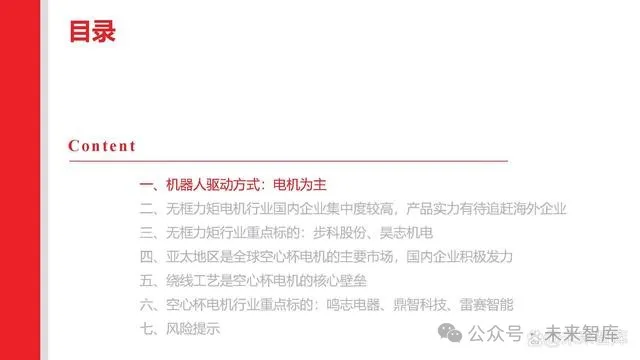

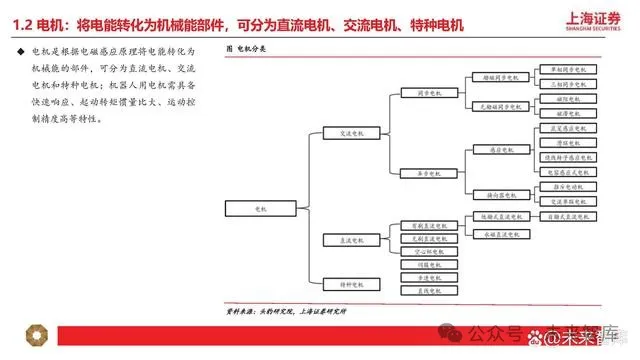
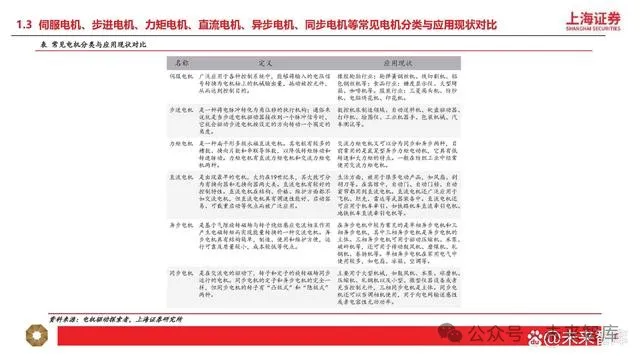
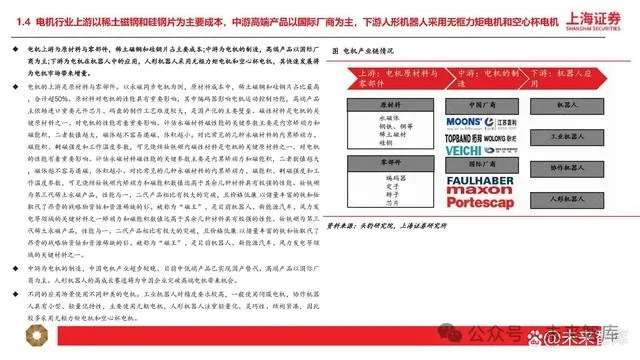
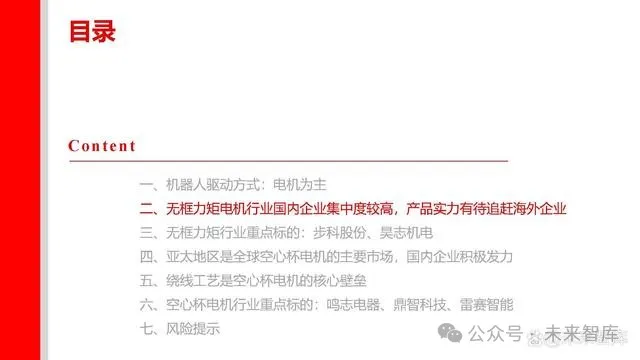
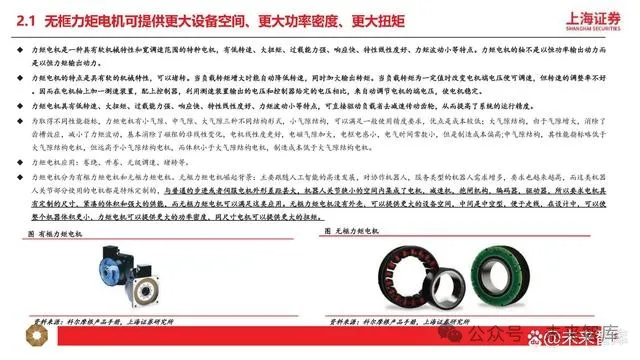
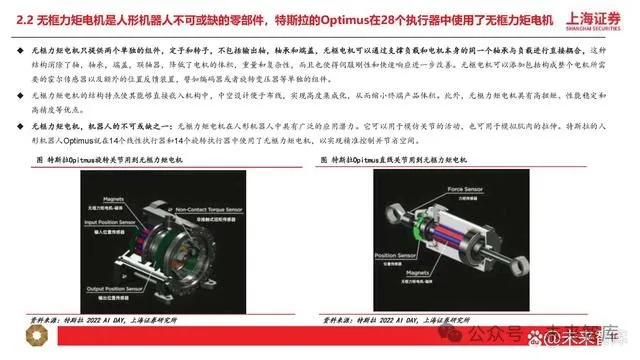
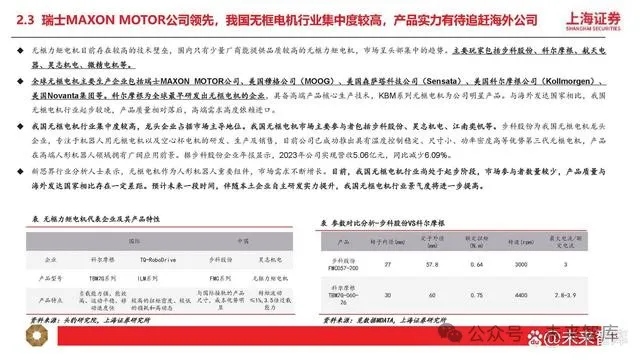
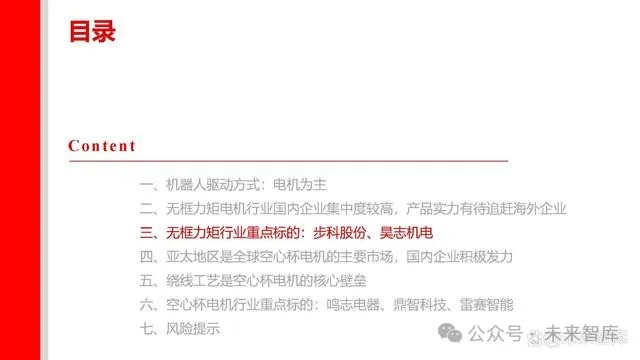
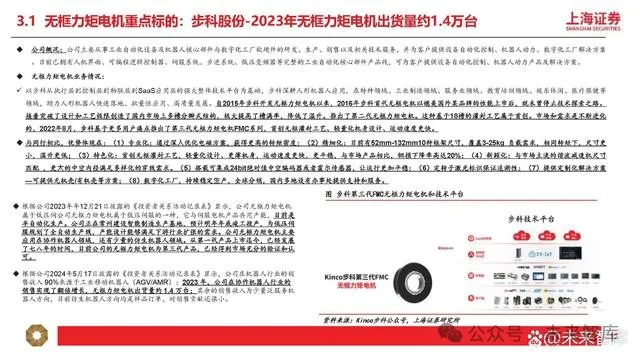
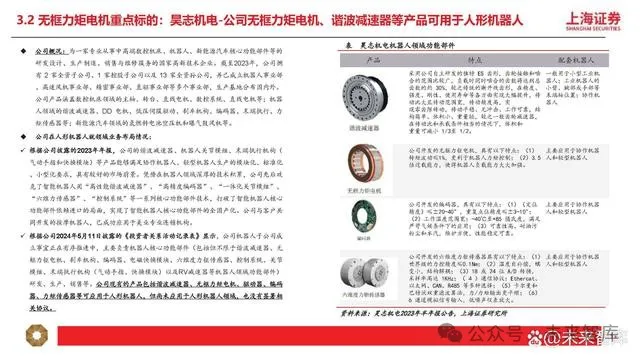
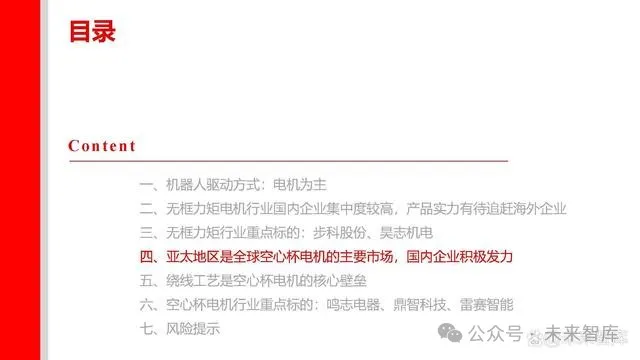
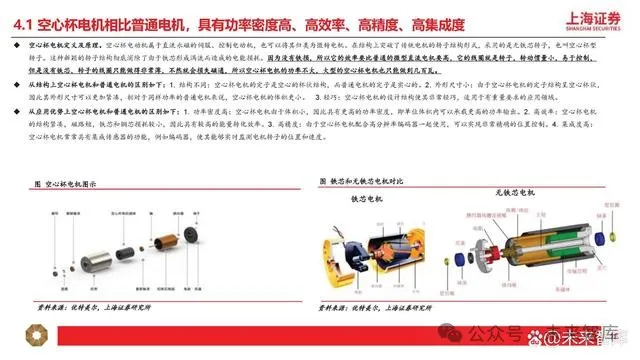
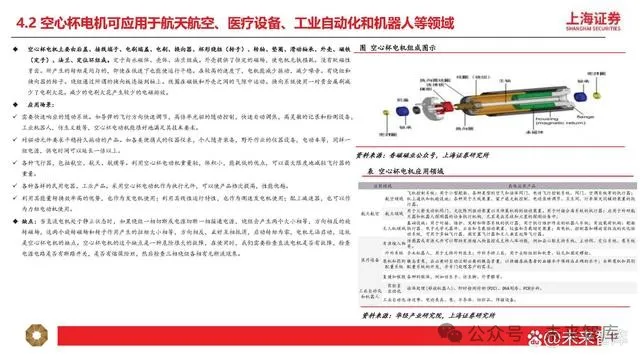
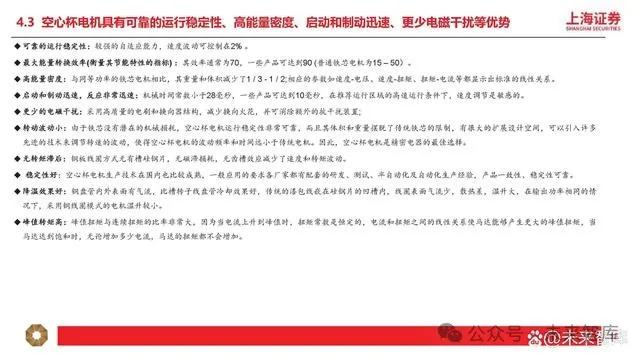
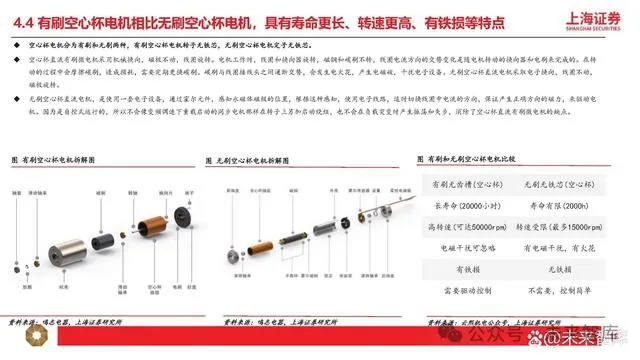
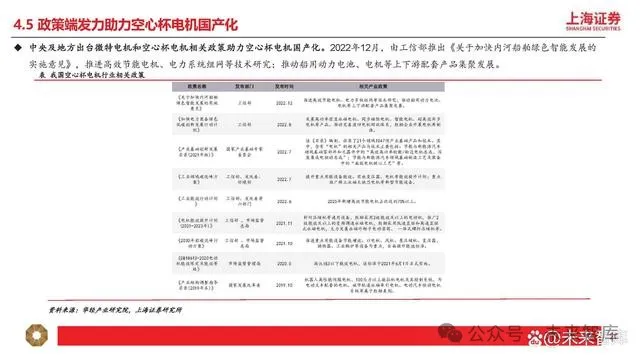
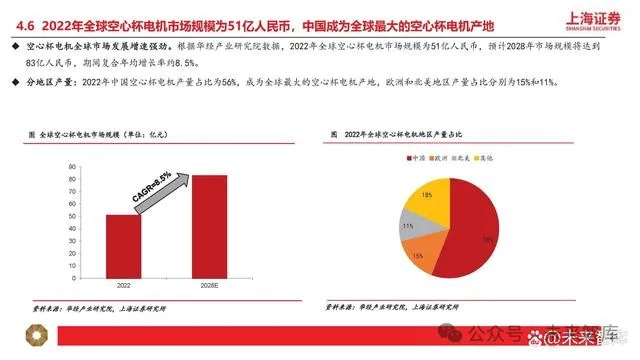
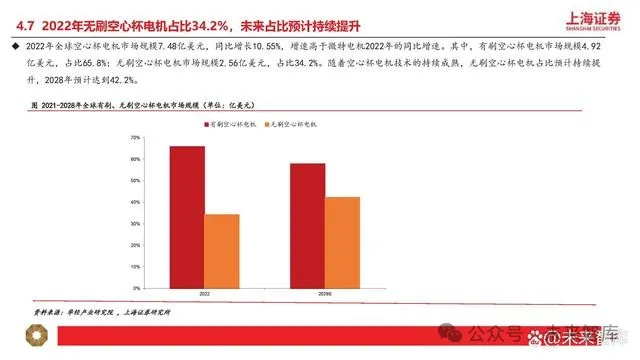
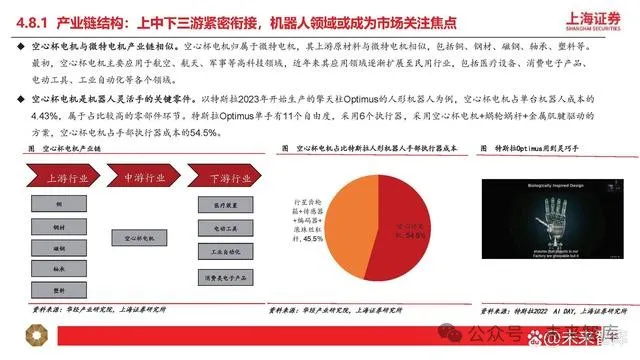
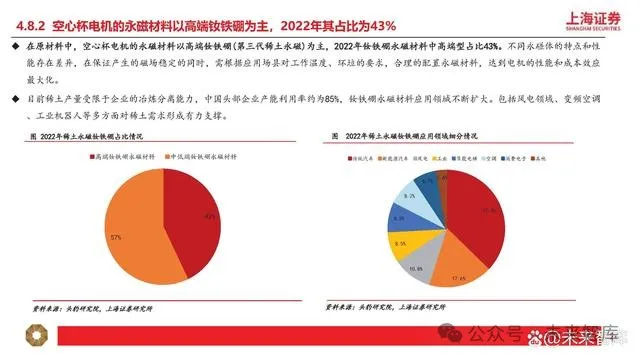
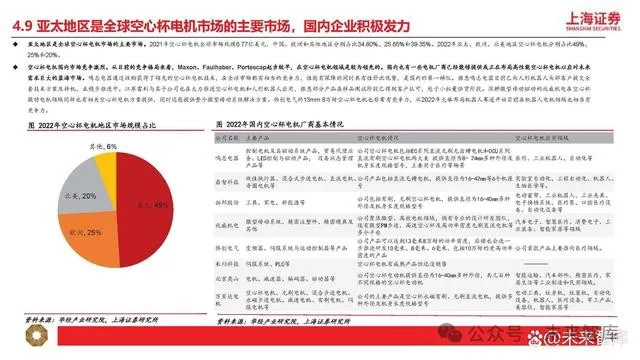
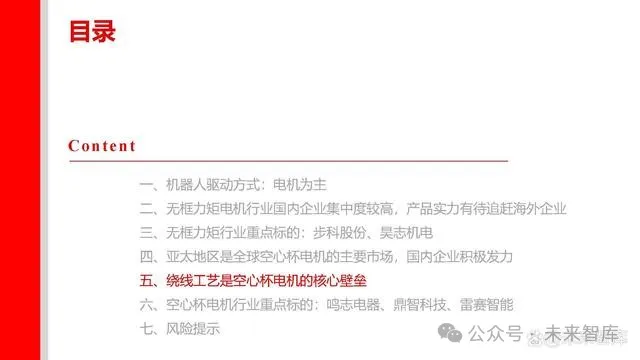
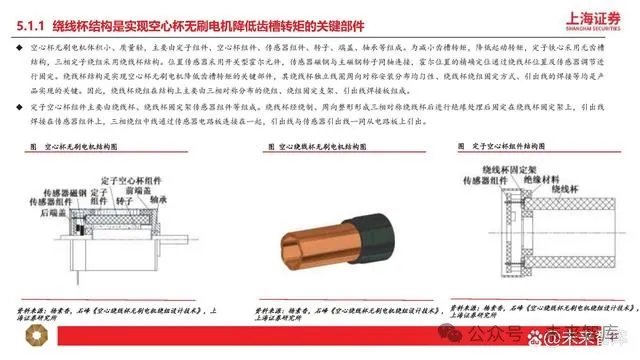
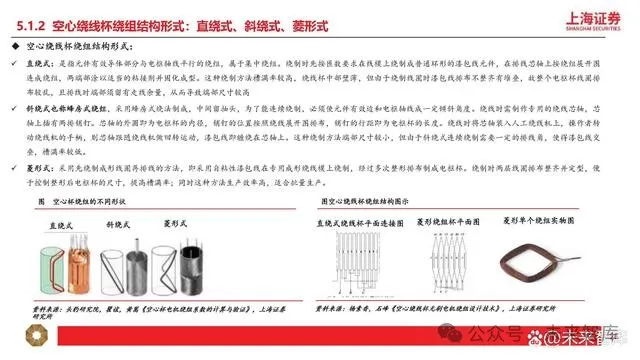
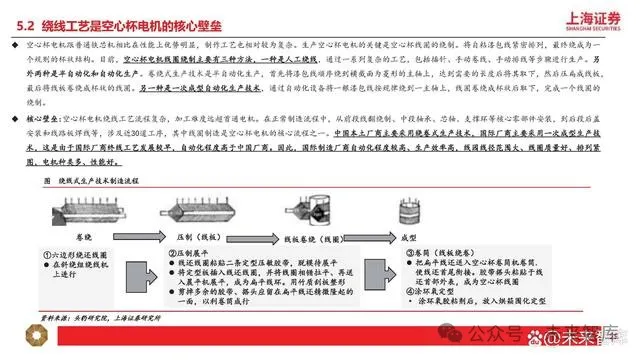
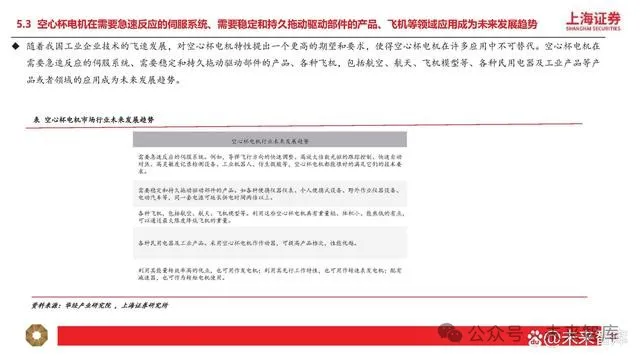
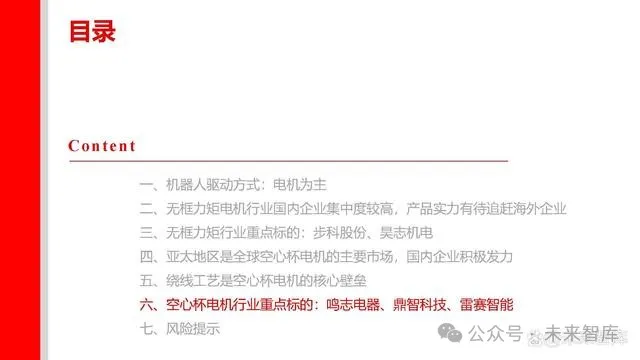
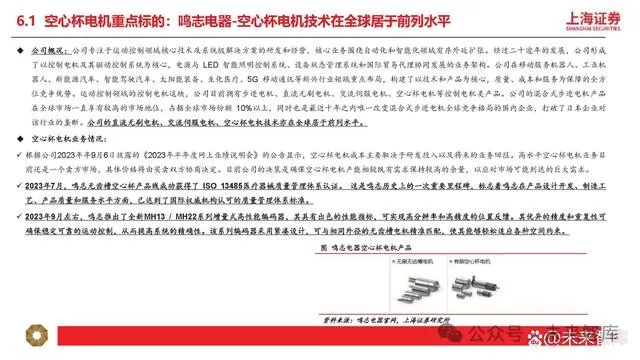
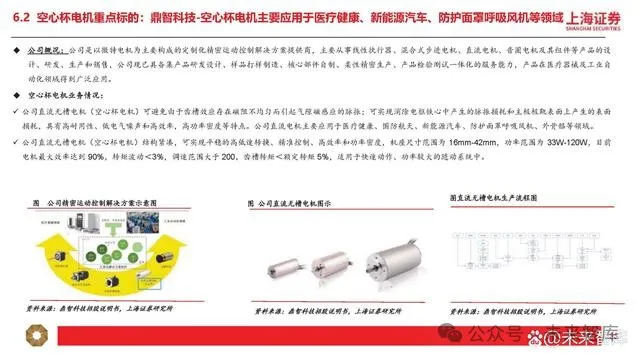
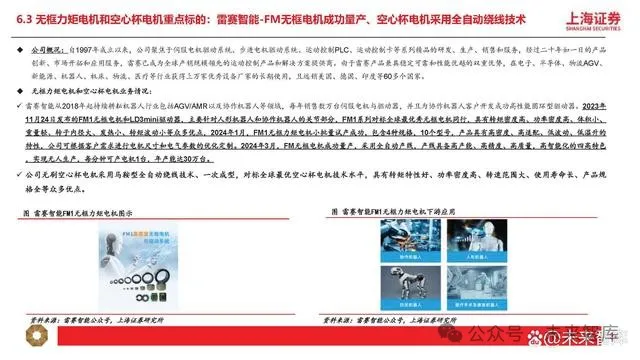
Welcome to all angel round enterprises in the automotive industry chain (including the power battery industry chain) to join the group (will recommend to over 1000 automotive investors from top institutions); there are communication groups for leaders of science and technology innovation companies, and dozens of groups related to the automotive industry including whole vehicles, automotive semiconductors, key components, new energy vehicles, intelligent connected vehicles, aftermarket, automotive investment, autonomous driving, and vehicle networking. For joining, please scan the administrator’s WeChat (please indicate your company name)
